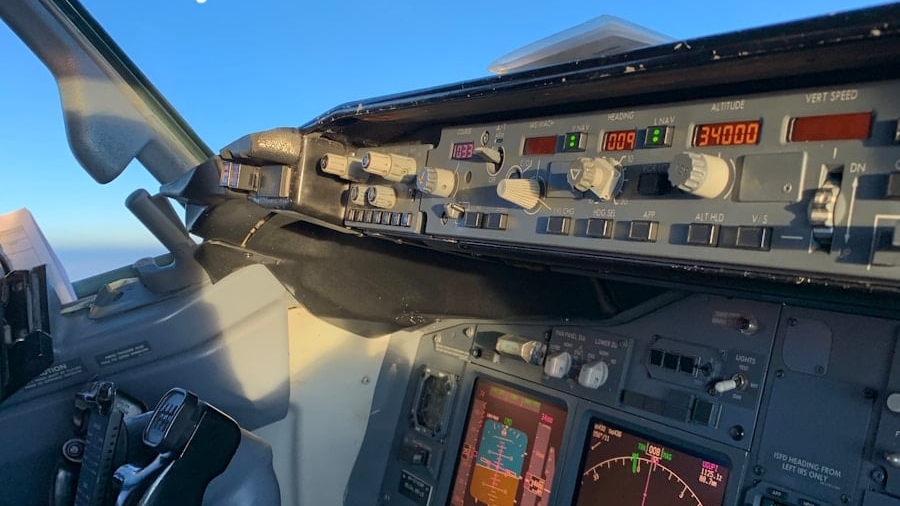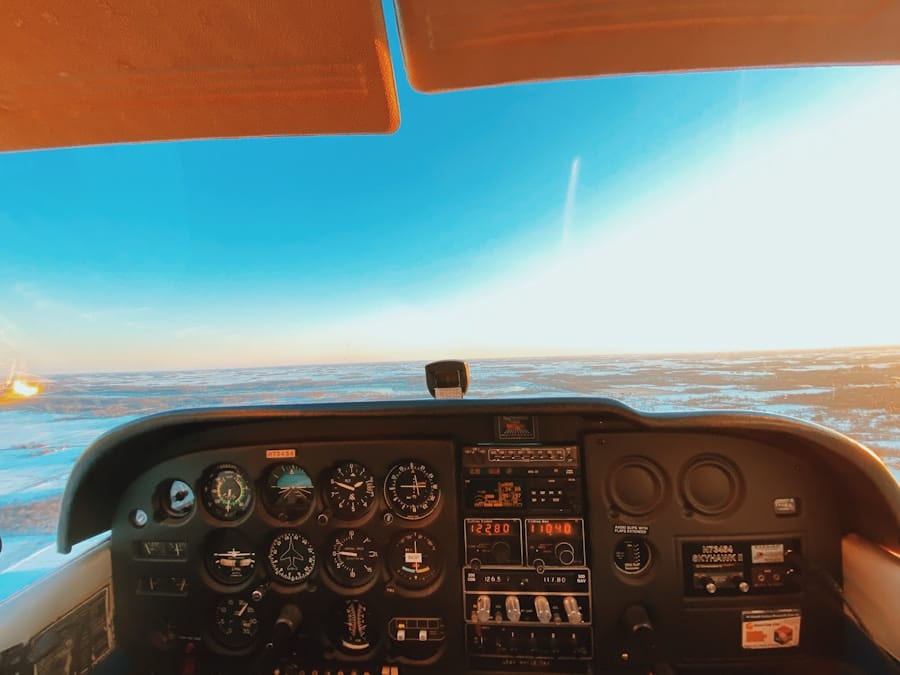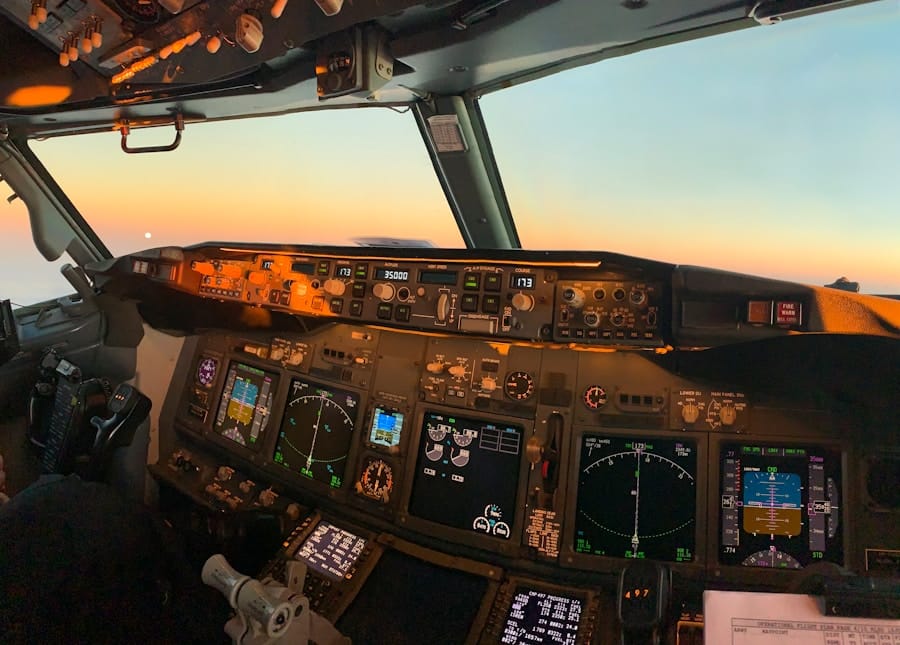The aviation industry has long been at the forefront of technological innovation, and the advent of virtual reality (VR) simulators marks a significant leap forward in pilot training methodologies. VR simulators create immersive environments that replicate real-world flying conditions, allowing aspiring pilots to experience flight without leaving the ground. This technology has transformed traditional training paradigms, offering a more engaging and effective way to prepare pilots for the complexities of modern aviation.
As the demand for skilled pilots continues to rise, the integration of VR into training programs is becoming increasingly essential. The use of VR simulators in pilot training is not merely a trend; it represents a fundamental shift in how flight instruction is delivered. By leveraging advanced graphics, realistic physics, and interactive scenarios, VR simulators provide a platform where trainees can practice maneuvers, emergency procedures, and decision-making skills in a safe environment.
This immersive experience enhances learning retention and prepares pilots for real-life challenges they may encounter in the cockpit. As aviation technology evolves, so too does the need for innovative training solutions that can keep pace with the industry’s demands.
Key Takeaways
- VR simulators are increasingly being used in pilot training programs to provide a realistic and immersive training experience.
- Advantages of using VR simulators for pilot training include enhanced safety, cost savings, and the ability to practice a wide range of scenarios.
- VR simulators offer cost-effectiveness in pilot training programs by reducing the need for expensive aircraft and fuel, and by allowing for more frequent and accessible training sessions.
- Realistic scenarios and situational training in VR simulators help pilots develop critical decision-making skills and improve their ability to handle emergency situations.
- Customization and flexibility in VR simulator training programs allow for tailored training experiences and the ability to practice specific skills or maneuvers.
Advantages of Using VR Simulators for Pilot Training
One of the most significant advantages of VR simulators is their ability to provide a risk-free environment for trainees. In traditional flight training, pilots must navigate the complexities of flying while also managing the inherent risks associated with operating an aircraft. VR simulators eliminate these risks by allowing trainees to make mistakes and learn from them without jeopardizing safety.
For instance, a trainee can practice handling an engine failure or navigating through severe weather conditions without any real-world consequences. This freedom to experiment fosters a deeper understanding of flight dynamics and emergency protocols. Moreover, VR simulators offer unparalleled accessibility to training resources.
Trainees can engage with the simulator at their convenience, allowing for more flexible scheduling and self-paced learning. This accessibility is particularly beneficial for those who may not have immediate access to an aircraft or traditional flight school facilities. Additionally, the ability to repeat scenarios as often as needed reinforces learning and builds confidence.
For example, a student struggling with instrument navigation can repeatedly practice in a VR environment until they achieve proficiency, ensuring they are well-prepared for actual flight.
Cost-effectiveness of VR Simulators in Pilot Training Programs
The financial implications of pilot training are substantial, with costs associated with aircraft rental, instructor fees, and fuel expenses adding up quickly. VR simulators present a cost-effective alternative that can significantly reduce these expenses. By utilizing VR technology, flight schools can minimize the need for extensive flight hours in actual aircraft, which are often the most expensive component of pilot training.
The initial investment in VR equipment can be offset by the savings accrued over time as students spend more hours training in a simulator rather than in the air. Furthermore, VR simulators can be used for a variety of training purposes beyond just initial flight instruction. They can serve as tools for recurrent training, proficiency checks, and even type ratings for specific aircraft models.
This versatility means that flight schools can maximize their return on investment by using the same equipment across multiple training programs.
Realistic Scenarios and Situational Training in VR Simulators
The realism offered by VR simulators is one of their most compelling features. Advanced graphics and sound design create immersive environments that closely mimic real-world flying conditions. Trainees can experience everything from takeoff and landing procedures to complex navigation challenges and emergency situations.
This level of realism is crucial for developing situational awareness—a key skill for any pilot. By simulating real-life scenarios, trainees learn to recognize and respond to potential hazards effectively. For instance, a VR simulator can recreate a scenario where a pilot encounters sudden turbulence or an unexpected weather change during flight.
The trainee must then make quick decisions based on their training and understanding of aviation principles.
Additionally, these simulations can be tailored to reflect specific regional challenges, such as flying in mountainous terrain or navigating busy airspace, further enhancing the relevance of the training.
Customization and Flexibility in VR Simulator Training Programs
Another significant advantage of VR simulators is their inherent flexibility and customization capabilities. Flight schools can tailor training programs to meet the specific needs of individual students or groups. This customization extends to the types of aircraft being simulated, the complexity of scenarios presented, and even the pacing of instruction.
Instructors can adjust parameters in real-time based on a trainee’s performance, ensuring that each student receives personalized attention and support. This adaptability is particularly beneficial in addressing diverse learning styles among trainees. Some students may thrive in high-pressure scenarios that challenge their decision-making skills, while others may require more foundational practice before tackling complex situations.
With VR simulators, instructors can create a bespoke training experience that caters to these varying needs, ultimately leading to more effective learning outcomes. For example, a student struggling with navigation might focus on basic flight maneuvers before gradually progressing to more advanced scenarios involving air traffic control communications.
Integration of VR Simulators with Traditional Pilot Training Methods
Comprehensive Training through Immersive Simulation
While VR simulators offer advantages, they are most effective when integrated with traditional pilot training methods rather than replacing them entirely. The combination of hands-on flight experience and immersive simulation creates a comprehensive training program that addresses both theoretical knowledge and practical skills.
Reinforcing Concepts through VR Simulations
For instance, after covering topics such as aerodynamics or navigation principles in class, instructors can direct students to practice those concepts in a VR simulator. This approach not only solidifies understanding but also allows students to see the real-time application of theoretical knowledge.
The Importance of Traditional Flight Instruction
Additionally, traditional flight instruction provides essential tactile experiences that cannot be fully replicated in a simulator, such as feeling the aircraft’s response during maneuvers or managing physical sensations during takeoff and landing.
Challenges and Limitations of VR Simulators in Pilot Training
Despite their many benefits, VR simulators are not without challenges and limitations. One significant concern is the potential for over-reliance on simulation technology at the expense of real-world flying experience. While VR provides an excellent platform for practicing various scenarios, it cannot fully replicate the complexities and nuances of actual flight operations.
For example, factors such as weather conditions, aircraft performance variations, and human factors like fatigue or stress cannot be entirely simulated. Additionally, there are technical limitations associated with VR technology itself. High-quality simulations require substantial computing power and sophisticated software development to ensure realism and accuracy.
Not all flight schools may have access to the latest technology or resources necessary to implement effective VR training programs. Furthermore, there is a learning curve associated with using VR systems; both instructors and trainees must become familiar with the technology to maximize its benefits fully.
Future Developments and Potential Impact of VR Simulators on Pilot Training Programs
Looking ahead, the future of VR simulators in pilot training appears promising as advancements in technology continue to evolve. Innovations such as artificial intelligence (AI) integration could enhance simulation realism by creating dynamic scenarios that adapt based on trainee performance or decision-making patterns. This level of sophistication would allow for even more personalized training experiences tailored to individual learning curves.
Moreover, as virtual reality becomes more mainstream within educational contexts, we may see increased collaboration between aviation authorities and technology developers to establish standardized protocols for using VR in pilot training programs. Such collaborations could lead to enhanced regulatory frameworks that ensure safety and efficacy while promoting innovation within the industry. In conclusion, as aviation continues to grow and evolve, so too will the methods used to train its pilots.
The integration of VR simulators into pilot training programs represents not just an enhancement but a revolution in how aspiring aviators prepare for their careers. With ongoing advancements in technology and an increasing understanding of effective training methodologies, the future holds great potential for improving pilot education through immersive simulation experiences.
A related article to “How VR Simulators Are Revolutionizing Pilot Training Programs” discusses the best software for 3D animation. This article explores the various tools and programs available for creating stunning 3D animations, which can be used in a variety of industries, including aviation. To learn more about the top software options for 3D animation, check out this article.
FAQs
What is a VR simulator?
A VR simulator is a virtual reality system that allows users to experience and interact with a simulated environment. It typically involves the use of a headset and controllers to create an immersive experience.
How are VR simulators revolutionizing pilot training programs?
VR simulators are revolutionizing pilot training programs by providing a realistic and cost-effective way for pilots to practice and improve their skills in a safe environment. They can simulate a wide range of scenarios and conditions, allowing pilots to gain valuable experience without the need for expensive aircraft or risking safety.
What are the benefits of using VR simulators for pilot training?
The benefits of using VR simulators for pilot training include cost savings, increased safety, accessibility to a wide range of training scenarios, and the ability to provide more frequent and consistent training opportunities for pilots.
Are VR simulators as effective as traditional training methods?
Studies have shown that VR simulators can be as effective as traditional training methods, and in some cases, even more effective. They provide a realistic and immersive training experience that can help pilots develop and maintain their skills more efficiently.
What are some examples of VR simulators being used in pilot training programs?
VR simulators are being used in pilot training programs for various aircraft, including commercial airliners, military jets, and helicopters. They are also used for training in different scenarios such as emergency procedures, adverse weather conditions, and instrument flying.



